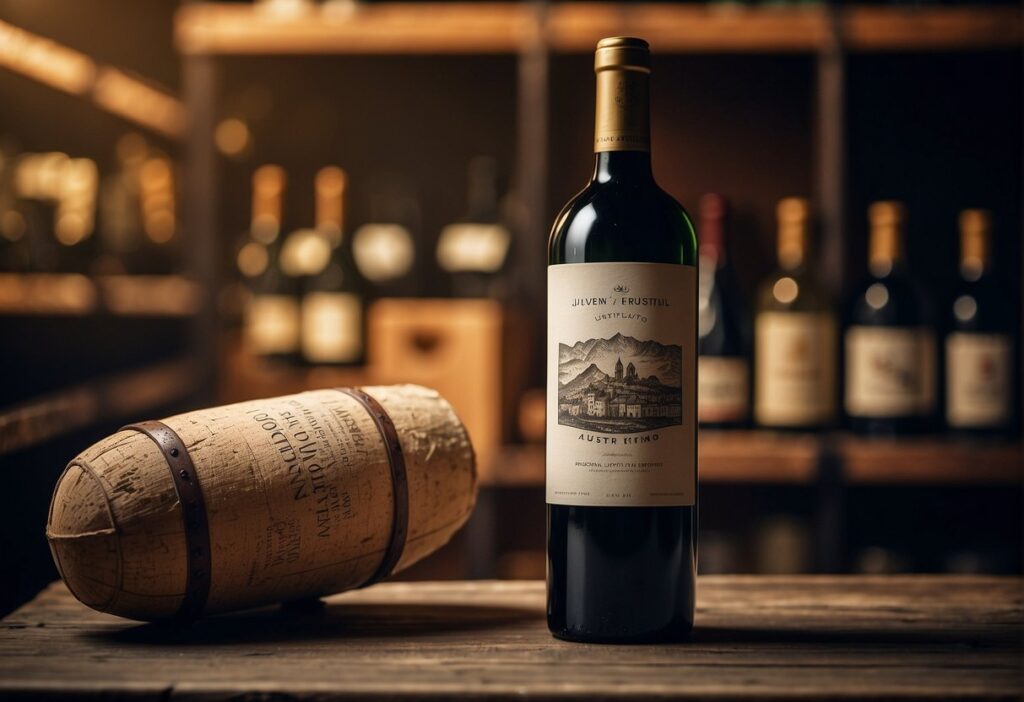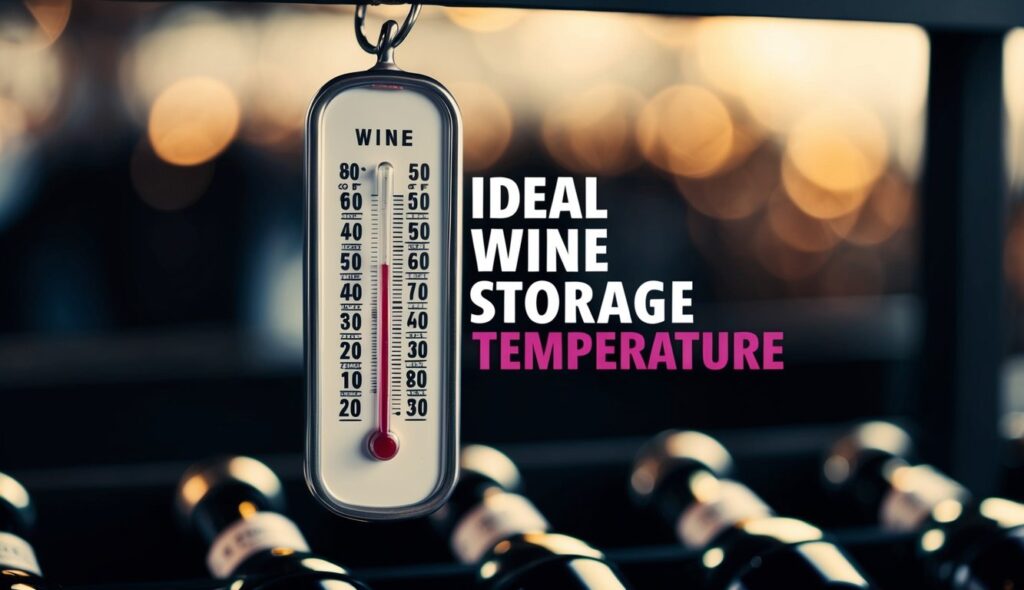Are you looking to make the most out of your wine collection? Preserving wine effectively is crucial for maintaining its flavor and quality. One of the essential steps is to keep oxygen exposure to a minimum, as it leads to oxidation, which can spoil the wine.
You can use vacuum wine saver pumps or re-cork an open bottle with the stained side of the cork to help reduce oxygen contact.

Humidity plays a significant role in wine preservation, too. Storing wine in an environment with the right humidity levels can prevent the cork from drying out, which can let unwanted air into the bottle.
It’s worth noting that both red and white wines benefit from being stored in the fridge once opened. They should still be consumed within a few days, even with proper preservation techniques.
Understanding these basic wine preservation strategies will ensure that your wine always tastes its best. Whether you are a casual drinker or a serious collector, these tips will help keep your wine collection enjoyable and fresh.
Understanding Wine Preservation
Proper wine preservation is key to maintaining the quality and flavor of your wine collection. Key factors include controlling temperature, minimizing exposure to light and humidity, and managing oxidation to keep your wine fresh.
The Role of Temperature
Temperature is a critical factor in wine preservation. Storing wine at a consistent, cool temperature ensures optimal preservation.
Ideally, your wine should be kept at around 55°F (13°C). Fluctuations in temperature cause the liquid to expand and contract, risking contact with the cork that could lead to spoilage.
Inconsistent temperatures can spoil both short-term and long-term storage. Remember, warmth accelerates aging, while extreme cold can harm the wine as well.
Using a dedicated wine fridge can help maintain a stable climate, particularly if your home’s environment varies.
Impact of Light and Humidity
Exposure to light can damage your wine. Ultraviolet rays cause chemical reactions that alter the compounds in wine, degrading its flavor and aroma.
Store wine in a dark area to prevent these issues. If possible, use dim lighting or keep your bottles in a closed cabinet.
Humidity levels also play a role in preservation. Maintaining a humidity level of about 70% helps keep the cork from drying out, which can let air into the bottle.
Too much humidity, however, may lead to mold growth, so balance is necessary for maintaining freshness, especially in long-term storage.
Oxidation and Wine Freshness
Oxidation is the primary enemy of an open bottle of wine. Once the cork is popped, oxygen interacts with the wine, leading to spoilage.
Using a wine preserver can limit oxidation by removing or displacing oxygen from the bottle.
Consider using methods like vacuum pumps or argon gas canisters to extend the wine’s freshness. These tools help by sealing the bottle tight, minimizing air exposure. When preventing oxidation, speed is crucial—seal your bottle as soon as possible to maintain freshness.
Choosing the Right Preservation Tools

Selecting the right tools is crucial to keep your wine fresh after opening. Effective wine preservation systems can prolong the enjoyment of a bottle and save you money by reducing waste.
Using Wine Preservers and Savers
To maintain wine freshness, wine preservers and savers are essential. These tools generally include vacuum pumps and airtight stoppers.
A popular choice is the Vacu Vin, a vacuum-based system that removes air from the bottle, helping to prevent oxidation. It is simple to use and can extend the life of red and white wines by up to 7 days.
Another option is silicone stoppers, which create an airtight seal to preserve flavor. While these tools can help, they work best with bottles that you plan to finish within a week. Regularly using these tools ensures that you can savor each glass as if it were freshly opened.
The Benefits of Argon Gas Systems
Argon gas systems offer an advanced solution for wine preservation. When used, they displace oxygen in the bottle, forming a protective layer over the wine.
This method is effective for preserving wine for much longer periods. Brands like Coravin use this technology, allowing you to pour a glass without removing the cork, which maintains the wine’s original character over time.
Argon gas is an inert gas that does not react with the wine, ensuring the flavor remains unchanged.
These systems can be pricier, but they are invaluable if you frequently open premium bottles. With the right argon gas system, you extend wine freshness beyond weeks, allowing for long-term storage of opened bottles.
Best Practices for Storing Wine
Proper wine storage is essential to maintaining the quality of your wine collection. Attention should be paid to choosing the right storage solutions and maintaining the optimal environment, such as temperature and humidity, in your wine cellar.
Wine Storage Solutions
When it comes to storing wine, selecting the right solution is crucial. Wine racks are a popular choice, allowing bottles to rest horizontally, keeping corks moist and preventing air from entering.
This positioning helps maintain the wine’s integrity over time.
Consider investing in wine refrigerators for short-term storage needs. These appliances let you control temperature precisely, which is key for preserving flavors.
Always store wine away from strong light sources. Prolonged exposure can degrade the quality, affecting both taste and aroma.
For large collections, dedicated wine cellars or rooms are ideal. Cellars provide more space and typically offer better conditions for long-term storage. If space allows, a professionally designed cellar can regulate both temperature and humidity effortlessly.
Maintaining a Wine Cellar Environment
Temperature control is vital. The ideal range for wine storage is around 55°F (13°C). Wine that gets too warm or too cold may lose its perfect taste profile.
Avoid locations with rapid temperature changes, as these can push corks out or create seepage problems.
Humidity levels should be managed between 50% and 80%. This prevents corks from drying out, which could allow air to spoil the wine.
To maintain these levels, consider using a humidifier in drier environments and keeping an eye on mold growth in more humid settings.
Ensuring minimal vibration is also essential. Constant movement can disrupt sediment in wine and alter its molecular structure, affecting flavor and texture. Store your wine in a stable environment to avoid this problem.
Expert Insights from Sommeliers

Sommeliers offer valuable advice on keeping wine fresh and enhancing tasting experiences. Knowing their tips can help you enjoy your wine at its best, whether you’re storing a bottle or savoring its flavors.
Sommelier Tips for Wine Freshness
A key method to preserve an opened bottle is to recork it tightly and store it in the refrigerator. This simple step slows down oxidation, which can spoil the wine’s flavors.
You can also use vacuum pumps to remove air from the bottle, further extending its shelf life.
Some sommeliers recommend storing the wine upright to minimize the surface area exposed to air. Temperature control is another vital factor.
Keeping wine at a consistent cold temperature prevents unwanted chemical reactions that lead to spoilage.
Another expert tip is to pour smaller servings to limit the amount of air that enters the bottle. This ensures that each glass tastes as fresh as the first.
Professional Wine Tasting Notes
When tasting wine, sommeliers focus on the balance and complexity of flavors. Begin by swirling the wine in the glass to release its aromas.
Notice the scents, as these can range from fruity to floral to earthy.
Take a small sip and let the wine spread across your palate. Pay attention to the primary flavors and any subtle hints that emerge.
The texture or “mouthfeel” is another aspect to consider, adding a layer to the tasting experience.
Each wine tells its story through body, acidity, and tannins. Developing a keen sense of these components allows you to appreciate and describe wines more intricately. This makes your tasting experience both educational and pleasurable.
Innovative Wine Preservation Techniques

In the world of wine preservation, new technologies offer exciting ways to keep your wine fresh for longer. These methods focus on maintaining the wine’s taste and preventing spoilage caused by air exposure.
The Coravin Revolution
The Coravin system allows you to pour wine without removing the cork. This innovative device uses a thin needle that penetrates the cork, letting you pour wine without exposing it to air.
This is ideal for wine enthusiasts who want to enjoy a glass without committing to the whole bottle.
How does it work? The system injects argon gas into the bottle, keeping the remaining wine fresh.
Argon, an inert gas, does not react with wine, ensuring the flavor and aroma stay intact.
This method can preserve wine for months, giving you the flexibility to savor different bottles over time. For more details on wine preservation systems, visit the Complete Guide to Wine Preservation.
Understanding Corked Wines
Corked wine doesn’t refer to traditional storage but to a flaw caused by TCA (trichloroanisole). This compound can spoil the wine, giving it a musty smell. Understanding this fault is crucial for any wine lover, as it impacts the quality of your wine collection.
What can you do?
Be mindful of where you store your wines, and always check for cork damage. Use wine preservation techniques like vacuum sealing to reduce the risk of exposure to cork contamination.
For more information on storing and preserving wine flavors, explore How to Preserve Wine Without Cork. These steps ensure your wines remain enjoyable and free from unwanted tastes.

